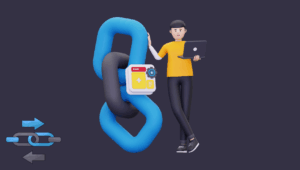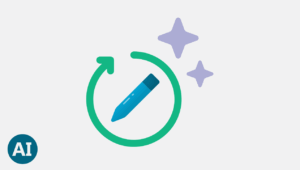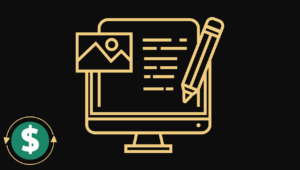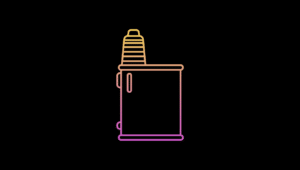Each country or regional block has a currency they accept as a legal tender and use to pay for goods and services. The most common currencies include the US Dollar, Sterling Pound, the Euro, and the Japanese yen, just to mention a few. These currencies are accepted and used to pay for goods and services internationally. Therefore, the value of currency changes in line with the value of goods and services produced in a country. When the value of a currency goes up relative to each other, it allows a trader to profit. In this article, you’ll learn what is Forex trading and how does it work.
The forex market is thus, a financial market where traders buy and sell foreign currencies. It is the largest market in the world in terms of liquidity and operates on a 24-hour basis. It opens early on Monday to late on Friday. The market attracts players like hedge funds, investment firms, banks, and retail traders.
Notice that the forex market has no central location or a common marketplace where traders meet physically to transact. Instead, it is executed electronically via a network of computers. It is, therefore, an over-the-counter market. Currently, the market traded volume is more than $6.6 trillion. Continue reading to see how forex trading works.
A pocket guide to key concepts
Use this table as a quick reference while reading charts and planning orders.
| Term | What it means | Why it matters | Quick example |
|---|---|---|---|
| Currency pair | Two currencies quoted together | You always trade one against the other | EURUSD at 1.0843 means one euro costs 1.0843 dollars |
| Base and quote | First currency is base, second is quote | Defines what you buy and sell | In GBPUSD you buy or sell pounds, price shown in dollars |
| Pip | Smallest standard price move | Used to measure distance, spread, and risk | EURUSD from 1.0843 to 1.0848 is five pips |
| Spread | Ask minus bid | A hidden cost that you pay on entry | If spread is one pip and you buy, you start down one pip |
| Lot size | Units per contract | Controls the value of a pip | One mini lot in EURUSD, a pip is about one dollar |
| Leverage | Control of large size with small margin | Boosts gains and losses | Ten to one leverage, a one percent move equals ten percent on your account |
| Swap or rollover | Interest adjustment for holding overnight | Can cost or pay depending on direction and rates | Long a higher yielding currency, you may receive a small credit |
| Stop loss | Exit that closes a losing trade automatically | Limits downside and stress | Risk twenty pips, close if price reaches that level |
| Take profit | Exit that locks a gain automatically | Removes emotion when a target is hit | Target forty pips for a two to one reward to risk |
| Slippage | Fill at a slightly different price | Can widen losses during fast moves | News release hits, your stop fills two pips lower than planned |
Buying And Selling A Currency Pair
Buying and selling foreign currencies is akin to buying stock and securities. The only difference is that foreign exchange currencies are paired, so you trade pairs of currencies. We have pairs like EUR/USD, JPY/GBP, USD/CAD, GBP/USD etc. So you trade forex by either buying or selling a currency. When you buy a currency and its price rises, you make a profit. Similarly, when the price of a currency starts falling, trader profits by selling the currency Forex trading work.
For instance, if the exchange rate for the EUR/USD is 1.2 to 1, you will part with $1200 to buy 1000 euros. But if something happens in the European Union zone, the exchange rate moves from 1.4 to 1; you can sell the 1000 euros at $1.4 each and receive $1400. The difference between the buying price of $1200 and the selling price of $1400 constitutes your profit. In this example, you will make $1400-$1200=$200
Thus, forex trading is a speculative process meaning that you must keep your eye on the events happening across the globe to accurately determine the direction in which a currency pair will be moving. It is vital to keep your eyes on political events, economic activities, trade flow, and geopolitical happenings that are likely to affect the demand and supply of forex. The market is very volatile, and so it offers experienced traders plenty of opportunities.
What Is Forex? Trading Platforms
Since there is no physical market, you need a platform to trade. The platforms allow one to execute trades on laptops, phones, PC or tablets.
To trade the currencies on these platforms, a trader must understand the currency pair they target. The process entails buying and selling two currencies at the same time. Typically, a currency pair consists of the quote and a base currency. For instance, in EUR/USD, the euro is the base currency while the USD is the quoted currency. So when a trader places a buy on EUR/USD pair, it means they are buying the euro while selling the American dollar.
If you correctly predict the direction in which a currency pair moves, you will make a profit as long as it moves in that direction.
Pips: What is Forex Trading
For the leading currency pairs, the fourth decimal, referred to as a pip, determines the profit you make. But the Japanese Yen has 2 decimals. Thus, a difference of several pips in any currency pair can result in a significant profit if a trader correctly predicts the direction of a currency. In addition, since there are large trading volumes, a small spread is likely to lead to significant losses.
Long and Short Positions: How Forex Trading Work
A long position- a trader will always hold a position when a trade is in progress. And will make a profit/ loss until he closes the position. A trader can hold long or short positions. A trader is to hold a long position when buying a currency. But when they sell the currency, the long position is out.
In our example, when a trader buys 1EUR in USD 1.2, they may hold the position hoping that the price rises so that they can sell it when the highest price is attained to understand how Forex trading work.
A short position- a trader holds a short position when they sell a currency expecting that the value falls to the lowest level before they can buy it again. Once they start buying the currency, a short position is said to be closed.








